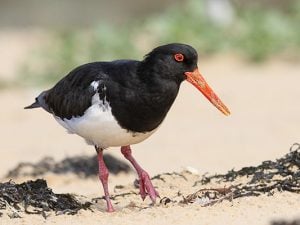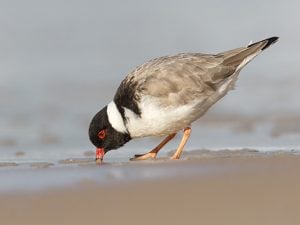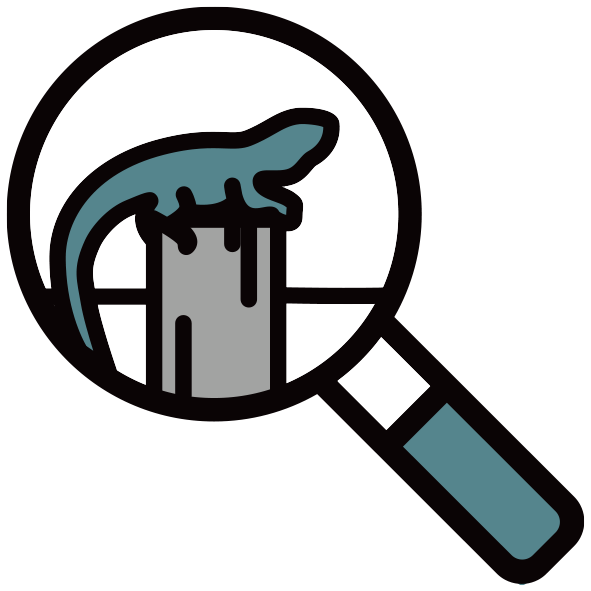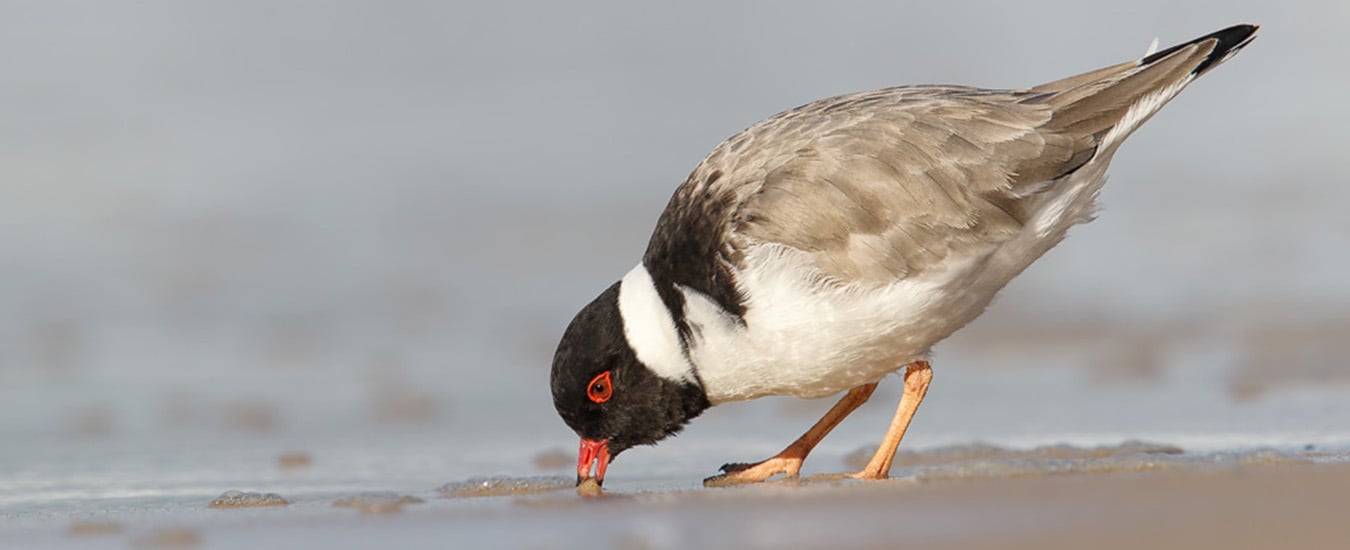The Peri-Urban Environmental Biosecurity Network (PEBN) spoke to Sophie Hall, coordinator of the South Coast Shorebird Recovery Program, about what makes their network tick, and what they do to monitor and conserve shorebirds at a number of important shorebird sites along the New South Wales coastline (from Wollongong to the Victorian border).
The project
How did the project and group start?
The South Coast Shorebird Recovery Program was established in 1999 (by the NSW National Parks and Wildlife Service) to reduce the rate of decline of threatened shorebirds and recover populations by enhancing breeding success.
The volunteers
Please tell us a bit about your volunteers.
We have around 100 volunteers, the majority of whom are retired and have an interest in wildlife and bird watching.
Volunteers do a range of tasks to help manage threatened shorebirds (Pied Oystercatchers, Hooded Plovers and Little Terns). They erect temporary habitat protection measures, such as string or electric fences, and interpretative or directional signage. They also perform maintenance of fences and signs.
Sandbagging nest sites under threat of inundation is another important task, as well as surveying beaches and estuaries for any shorebird nesting activity.
Volunteers also monitor key shorebird nesting sites and educate the public by answering questions and handing out information brochures.

Volunteers at the Tuross Head site (Photo courtesy of Ann Christiansen)
Challenges and successes
What are some of the challenges and successes of the program?
There are many challenges to reducing the rate of decline of threatened shorebirds and enhancing breeding success. These include:
- accidental trampling of eggs and chicks by humans
- eggs and chicks being squashed by vehicles (more a threat on the NSW north coast)
- domestic dogs chasing birds and eating eggs
- predators such as foxes, crows and cats
- inundation of nests by storms, king tides and storm surges.
Some successes include:
- increased public awareness (of the threat to shorebirds) through online videos, newspaper articles, public talks and radio interviews.
- reduced human disturbance of shorebirds achieved through stationing volunteer wardens at key sites and installing temporary fencing
- greater protection (of shorebirds) from native and introduced predators through a coordinated fox control program with local council, NSW Crown Lands and private landholders.
In addition, over the past twenty years, a comprehensive monitoring program has been established and valuable information on the ecology of shorebirds (and expertise in shorebird management) has been obtained.


Left: Pied oystercatcher | Right: Hooded plover (Photos courtesy Leon Berzines)
What does your group do to make locals more aware of threats to beach nesting birds and the need for monitoring predators and other threats?
Volunteers will educate beach goers and dog walkers about nesting shorebirds and threats over the summer period. We have also developed online videos on threatened shorebirds and the impact of dogs and fishers.
What education and resources do you provide your volunteers with?
Volunteers receive training in:
- shorebird identification
- public education and communication
- data collection
- monitoring
- habitat protection techniques.
What does your role as coordinator involve?
A range of tasks including volunteer coordination, fox control, shorebird monitoring and habitat protection, public education and also data collection, collation and analysis.
How can you help protect the environment?
If you’re interested in becoming a Shorebird volunteer or learning more about the South Coast Shorebird Recovery Program visit South Coast Shorebirds.
Join the Peri-urban Environmental Biosecurity Network
The Peri-urban Environmental Biosecurity Network is engaging people from all walks of life who live, play or work in peri-urban areas to contribute to detecting and reporting new and emerging environmental pests, weeds and diseases. The network offers opportunities to learn through various events offered by our partners or articles on the website. You can also ask one of our experts if you have environmental biosecurity questions. Join our network by following the PEBN facebook page, or subscribe to our newsletter and be notified of the latest articles and upcoming community events.
Acknowledgements:
This interview was conducted by Rhyll Vallis from the Peri-urban Environmental Biosecurity Network.


One comment, add yours.
Consie Larmour
I have been living part-time at Kioloa since about 1989, but now half time. I have had quite regular contact with Shorebirds volunteers and have assisted them over recent years with information on the location of pairs of hooded plovers — until recently on Island Beach (Pretty Beach). I have not been able to join the group because I do not have a car and because of my age. But I would like to contribute as able.
In August (2023) a pair of hooded plovers were walking regularly between the north end rocks of Kioloa beach to Shell Beach and also on the length of Shell Beach, but there were no signs of any nest areas.
Have they nested at Racecourse Beach? I would really appreciate any information on their current whereabouts, and how I could please continue to be useful.